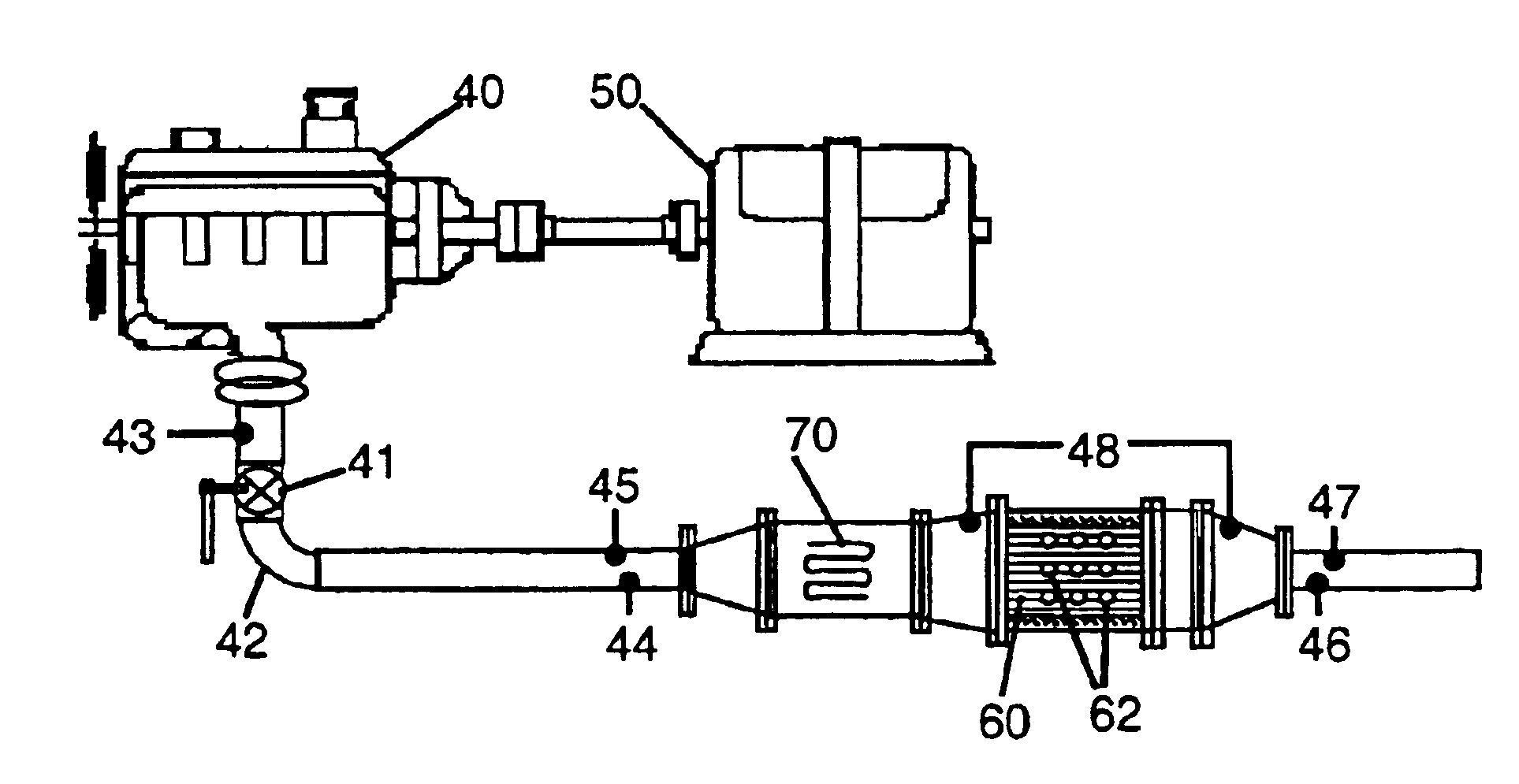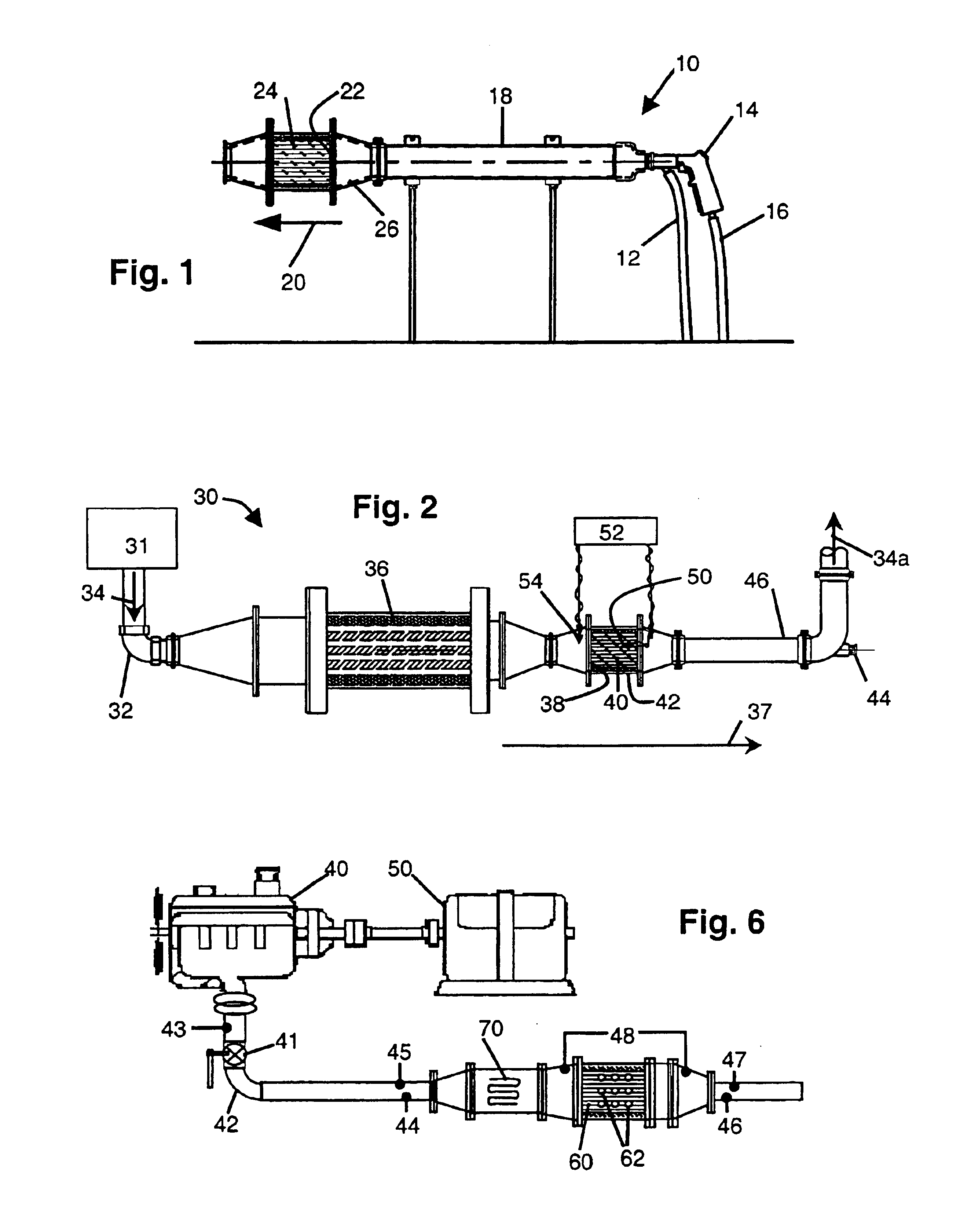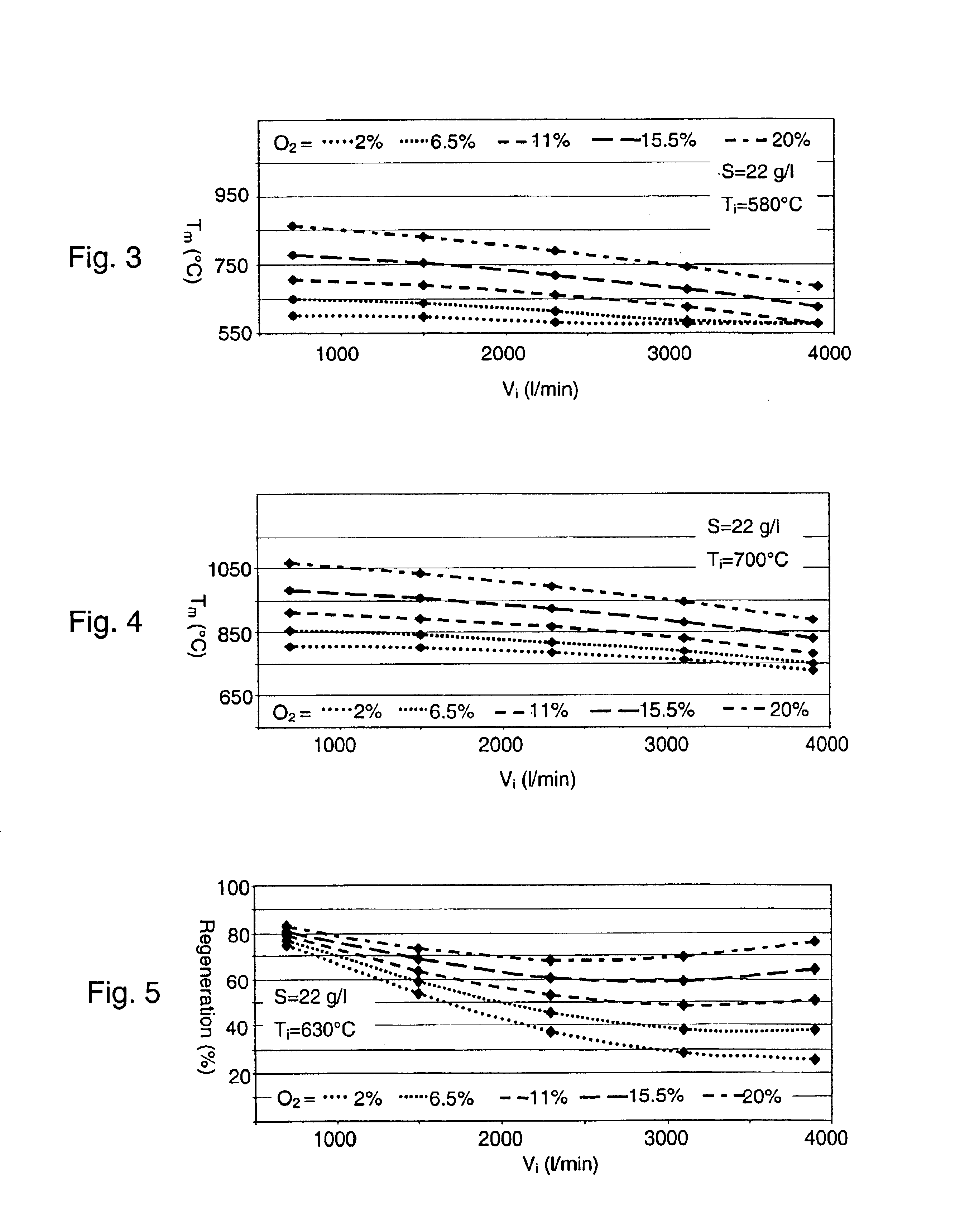Filters for engine exhaust particulates
a technology of engine exhaust and filter, applied in the field of particle filters, can solve the problems of inability to accurately predict the amount and type of soot accumulated prior to initiating soot regeneration, and the nature of soot accumulation and combustion behavior of accumulated soot, and achieve the effect of reducing the prospective cost of optimal emissions control systems, maximizing regeneration efficiency, and significantly expanding the range of suitable filter materials and geometries
- Summary
- Abstract
- Description
- Claims
- Application Information
AI Technical Summary
Benefits of technology
Problems solved by technology
Method used
Image
Examples
example 1
Filter Bench Testing
A porous ceramic wall flow filter of cordierite chemical composition is selected for evaluation. The filter to be evaluated is a cylindrical honeycomb filter of 4.5 inches diameter and 5 inches length, comprising alternately plugged channels at a cell density of 200 cell / in2 of filter frontal area and a channel wall thickness of 0.012 inches, with a wall porosity of 50% volume. This filter configuration is adequate to handle exhaust gas flows such as would be produced by two-liter diesel engines.
For each test run, the selected filter is first preloaded with a measured quantity of an artificial soot, in this case consisting of Printex®-U carbon black from Degussa AG, Frankfurt, Germany. Soot loadings in the range of about 9-22 grams / liter of filter volume are used. The filter is then fitted with a thermocouple for measuring regeneration temperatures, the thermocouple being positioned 4 inches from the filter front face and 10 mm from the outer cylindrical surface ...
PUM
| Property | Measurement | Unit |
|---|---|---|
| temperature | aaaaa | aaaaa |
| temperatures | aaaaa | aaaaa |
| temperatures | aaaaa | aaaaa |
Abstract
Description
Claims
Application Information
 Login to View More
Login to View More - R&D
- Intellectual Property
- Life Sciences
- Materials
- Tech Scout
- Unparalleled Data Quality
- Higher Quality Content
- 60% Fewer Hallucinations
Browse by: Latest US Patents, China's latest patents, Technical Efficacy Thesaurus, Application Domain, Technology Topic, Popular Technical Reports.
© 2025 PatSnap. All rights reserved.Legal|Privacy policy|Modern Slavery Act Transparency Statement|Sitemap|About US| Contact US: help@patsnap.com



